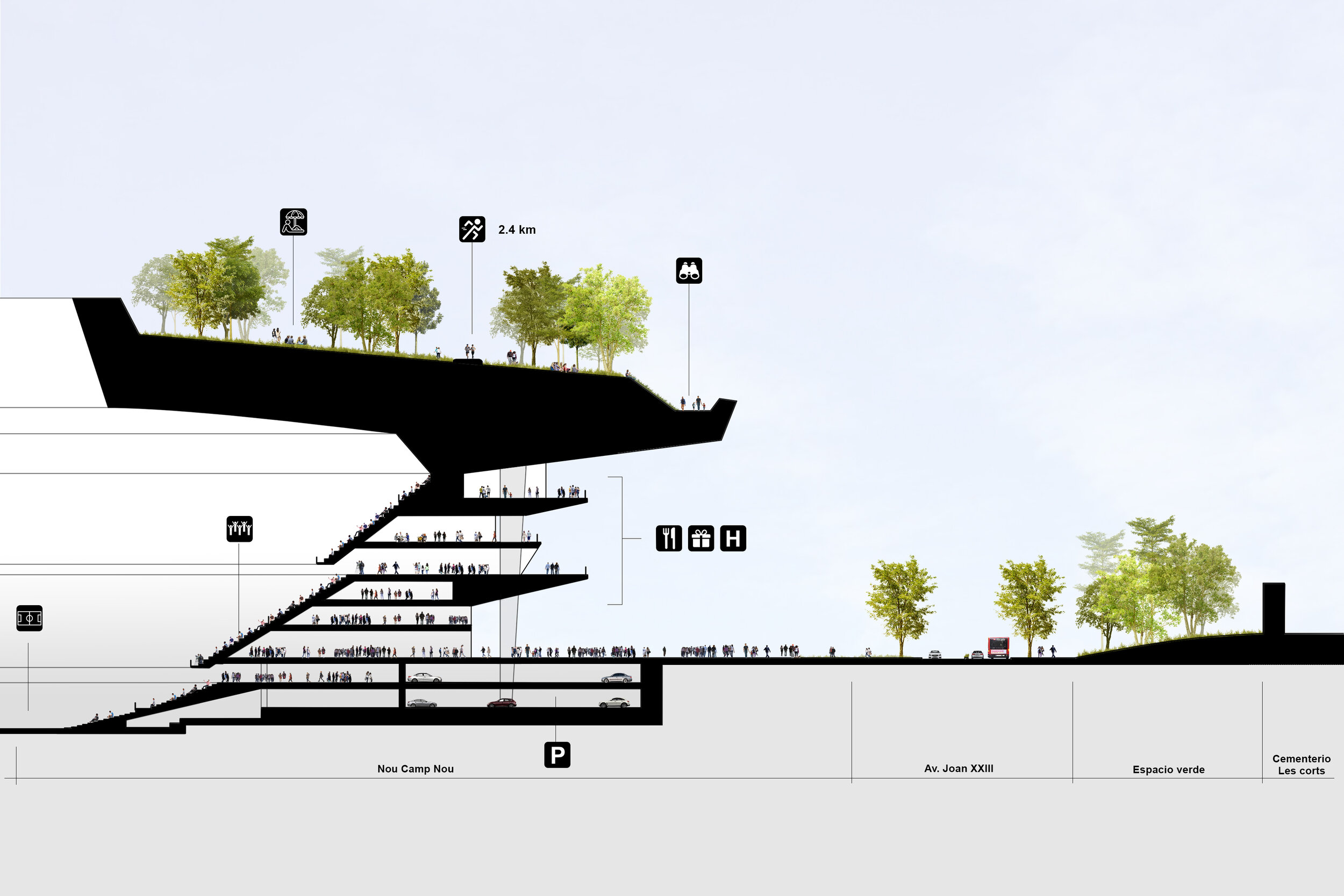Greening the FC Barcelona stadium
Camp Nou has been the home to FC Barcelona since 1957 and now ON-A Architecture, a studio specialising in renaturation and bioconstruction, has released a proposal which would convert the stadium into a 26-hectare green space.
Nou Parc would rise to cover the FC Barcelona football stadium, currently the largest football stadium in Europe.
The blanket of green forest would drape over the facilities and hide the services linked to the stadium, while allowing it to function independently of the park.
Camp Nou became FC Barcelona’s home in 1957.
The area is currently 32% building, 10% sports area, 8% green area and 50% hard pavement, generating an island effect by separating Les Corts from the University Area.
According to ON-A Architecture, this project, “would help to create a new permeability that would allow the connection between the two neighbourhoods of Les Corts and the University Area, apart from giving more value to their neighbours and to the city of Barcelona itself without affect (sic) mobility and current logistics.”
The proposed scene for above the stadium.
Their proposal would produce 15,000 kilograms of oxygen and absorb 25,000 kilograms of carbon dioxide each day, and two lakes featured are designed to cool the temperature of the area and collect rainwater for irrigation.
The organic environment would be controlled by sensors, collecting information on the health status of green areas and acting as irrigation gatekeepers, thereby minimising water consumption and maximising the efficiency of conserving the area’s green spaces.
The park would be 26 hectares.
Jordi Fernandez, ON-A Architecture founding partner, points out that, “we cannot be green if that implies an excessive use of resources.
The technology for the control of water consumption has come a long way and allows us to innovate and optimise green areas in urban spaces.”
The proposal includes running and walking tracks as well as vantage points for view seekers.
Other features include a 2.4-kilometre running and walking route within the forest, and a 360-degree panoramic view at the highest point of the park.
Creating a large forest for the city would demonstrate that cities can be renatured without losing building space.
A layered approach to the park.
ON-A Architecture’s proposal shows how large areas of parkland can be introduced into urban zones, and, “aims to turn the area into a great green lung using bioarchitecture as a strategy for renaturation.”
The World Health Organisation says that cities should have at least nine square metres of green space per inhabitant, and Barcelona currently has just over six.
Therefore, as Fernandez says, “renaturing cities and gaining quality space for citizens is no longer just an interesting idea, it is a necessity.”





